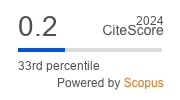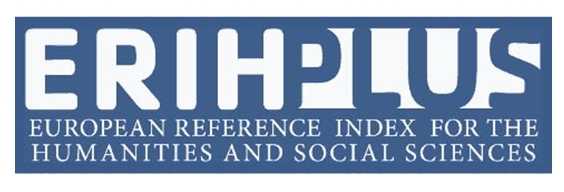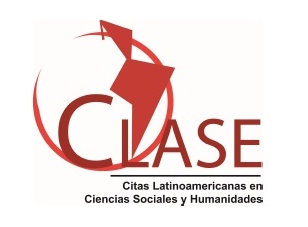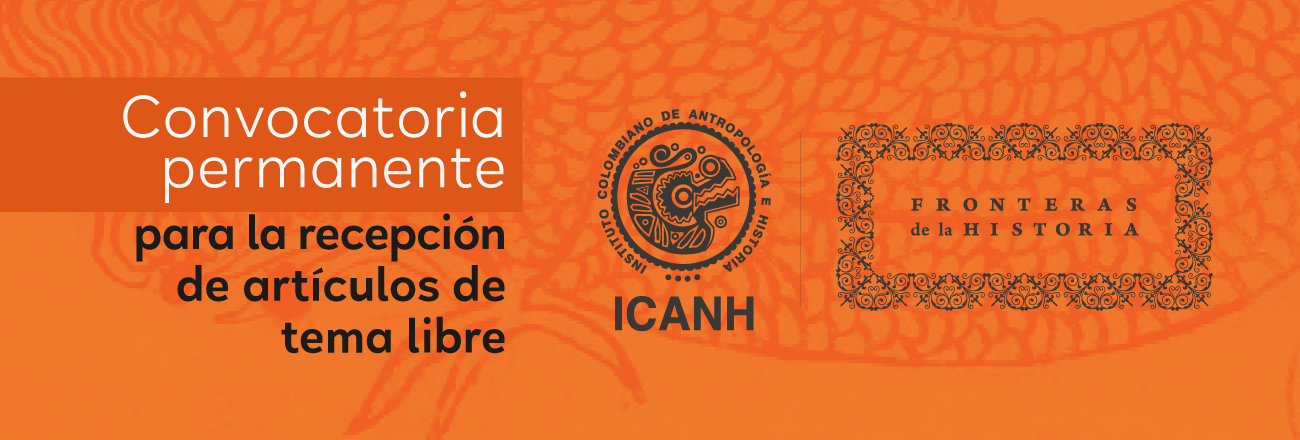Una mirada transnacional
Resumen
En los 10 años que tiene de haberse fundado esta revista[ 2 ]., importantes cambios demográficos han dado lugar a transformaciones en los estudios sobre migración. Desde esta perspectiva, las preguntas que se hacen los estudiosos de la migración junto con las herramientas de análisis y la metodología que utilizan para responderlas se han modificado drásticamente. En este ensayo se asume una mirada desde una perspectiva idiosincrásica para anlizar estos cambios y se propone un rumbo a seguir en el futuro. El estudio se concentra en las ventajas analíticas de utilizar una perspectiva transnacional para el estudio de la migración, en la importancia de tomar en cuenta el espacio y la magnitud de nuestro trabajo, y en situar de nuevo la cultura en el centro de nuestros debates. Así mismo se destacan las oportunidades que las intersecciones interdisciplinarias nos brindan para que nuestro campo avance en una nueva y más productiva dirección.
Descargas
Citas
Alba, R., 1990, Ethnic Identity: The Transformation of White America, New Haven, Yale University Press.
Appadurai, A., 2004, “The Capacity to Aspire: Culture and the Terms of Recognition”, in Vijayendra Rao and Michael Walton (eds.), Culture and Public Action: A Cross-Disciplinary Dialogue on Development Policy, Palo Alto, California, Stanford University Press, pp. 5984.
Arizpe, L., 2004, “The Intellectual History of Culture and Development Institution”, in Vijayendra Rao and Michael Walton (eds.), Culture and Public Action: A Cross-Disciplinary Dialogue on Development Policy, Palo Alto, California, Stanford University Press, pp. 163184.
Banfield, E., 1967, The Moral Basis for a Backward Society, New York, Free Press.
Besserer, F., 2003, “Contesting Community: Cultural Struggles of a Mixtec Transnational Community”, Ph. D. thesis, Stanford University.
Bloemraad, I., 2006, Becoming a Citizen: Incorporating Immigrants and Refugees in the United States and Canada, Berkeley/ Los Angeles, University of California Press.
Bose, S., 2006, A Hundred Horizons: The Indian Ocean in the Age of Global Empire, London/Cambridge, Massachusetts, Harvard University Press.
Brettell, C. B., 2005a, “The Spatial, Social, and Political Incorporation of Asian Indian Immigrants in Dallas, Texas”, Urban Anthropology, num. 34, pp. 247.
Brettell, C. B., 2004b, “Translocal Flows in the Americas”, Bellagio Workshop Report, October 2027, 2004 (Internal Rockefeller Foundation Document).
Bryceson, D. F. and U. Vuorela, 2000, The Transnational Family: New European Frontiers and Global Networks. Oxford/New York, Berg.
Cadge, W. et al., 2009, The City as Context: Culture and Scale in New Immigrant Destinations, in Pieter Bevelander (ed.), Malmö, Sweden, Malmö Institute for Studies of Migration, Diversity and Welfare (MIM)/Department of International Migration and Ethnic Relations (IMER) (Willy Brandt Series of Working Papers in International Migration and Ethnic Relations 1).
Chavez, L. R., 2001, Covering Immigration: Popular Images and the Politics of the Nation, Berkeley, University of California Press.
De Haas, H., 2007, Remittances, Migration and Social Development: A Conceptual Review of the Literature, Geneva, United Nations Research Institute for Social Development/Social Policy and Development Programme (Paper num. 34).
Eade, John, 1997, Living the Global City: Globalization as a Local Process, London, Routledge.
Fix, M. and W. Zimmerman, 2000, “The Integration of Immigrant Families”, Strengthening Immigrant Families and American Communities: Strategies for the New Century, Washington, DC, Urban Institute.
Gans, Herbert, 1979, “Symbolic Ethnicity: The Future of Ethnic Groups and Cultures in America”, Ethnic and Racial Studies, vol. 2, num. 1, pp. 120.
García Canclini, N., 1995, Hybrid Cultures: Strategies for Entering and Leaving Modernity, Minneapolis, University of Minnesota.
Ghosh, Amitav, 1992, In an Antique Land, London, Granta Books.
Gil, Rocio et al., 2005, “Informe de investigacion #1. Etnografía transnacional de Santa María Tindú circuito Oaxaca, subcircuito Mixteca”, unpublished manuscript.
Gilroy, P., 1993, The Black Atlantic: Double Consciousness and Modernity, Cambridge, Massachusetts, Harvard University Press.
Glick Schiller, N., A. Caglar and T. C. Guldbrandsen, 2006, “Beyond the Ethnic Lens: Locality, Globality, and BornAgain Incorporation”, American Ethnologist, num. 33, pp. 612633.
Glick Schiller, N. and A. Caglar, 2009, “Towards a Comparative Theory of Locality in Migration Studies: Migrant Incorporation and City Scale”, Journal of Ethnic and Migration Studies, vol. 35, num. 2, pp. 177202.
Glick Schiller, N. and P. Levitt, 2006, Haven’t We Heard this Somewhere Before? A Substantive Review of Transnational Migration Studies by Way of a Reply to Waldinger and Fitzgerald, Princeton, New Jersey, Center for Migration & Development, Princeton University (Working Paper 0601).
Godzniak, E. and S. F. Martin (eds.), 2005, Beyond the Gateway: Immigrants in a Changing America, Landham, Maryland, Lexington Books.
Harrison, L. and S. Huntington (eds.), 2000, Culture Matters: How Values Shape Human Progress, New York, Basic Books.
HernándezLeón, R. and Zúñiga, V., 2003, “Mexican Immigrant Communities in the South and Social Capital: The Case of Dalton, Georgia”, Southern Rural Sociology, vol. 19, num. 1, pp. 2045.
Huntington, S., 1996, Clash of Civilizations, New York, Simon and Schuster.
Jiménez, L. F., 2008, “De Paisano a Paisano: Mexican Migrants and the Transference of Political Attitudes to their Country of Origin”, Ph. D. Dissertation, University of Pittsburgh. Available at: <http://etd.library.pitt.edu/ETD/available/etd12122008102319/unrestricted/Luis_F_Jimenez_12_2008. pdf> (last accessed on March 9, 2011).
Jónsson, G., 2007, The Mirage of Migration: Migration Aspirations and Immobility in a Malian Soninke Village, Master’s thesis, num. 466, University of Copenhagen, Institute for Anthropology.
Keohane, R. O. and J. S. Nye Jr., 1971, “Transnational Relations and World Politics: A Conclusion”, International Organization, num. 25, pp. 721748.
Khagram, S. and P. Levitt, 2007, The Transnational Studies Reader, New York/London, Routledge Press.
LambaNieves, D., “Furthering the Discussions on the Migration Development Nexus: A Closer Look at Dominican Hometown Associations and their Development Impacts”, unpublished paper, mit Department of Urban Studies and Planning.
Lamont, M. and M. L. Small, 2008, “How Culture Matters: Enriching our Understanding of Poverty”, in Ann Lin and David Harris (eds.), The Colors of Poverty: Why Racial and Ethnic Disparities Persist, New York, Russell Sage Foundation, pp. 76102.
Levitt, P., 2001, The Transnational Villagers, Berkeley/Los Angeles, University of California Press.
Levitt, P., 2007, God Needs No Passport, New York, The New Press.
Levitt, P. and N. Glick Schiller, 2004, “Conceptual and Methodological Developments in the Study of International Migration”, International Migration Review, vol. 38, num. 3, pp. 10021039.
Lindstrom, D. P. and E. MuñozFranco, 2005, “Migration and the Diffusion of Modern Contraceptive Knowledge and Use in Rural Guatemala”, Studies in Family Planning, vol. 36, num. 4, pp. 277288.
Massey, D. S., 2008, New Faces in New Places: The Changing Geography of American Immigration, New York, Russell Sage Foundation.
North American Transnational Communities Program (NATC), 2004, “The Cultural Dimension of Transnational Communities”, Meeting Report, Oaxaca City, Oaxaca, Mexico, Internal Rockefeller Foundation Document, August 910, 2004.
Osella, C. and F. Osella, 2000, “Migration, Money and Masculinity in Kerala”, The Journal of the Royal Anthropological Institute, vol. 6, num. 1, pp. 115131.
Padín, J. A., 2005, “The Normative Mulattoes: The Press, Latinos, and the Racial Climate on the Moving Immigration Frontier”, Sociological Perspectives, num. 48, pp. 4975.
Portes, A. and J. Sensenbrenner, 1993, “Embeddedness and Immigration: Notes on the Social Determinants of Economic Action”, American Journal of Sociology, vol. 98, num. 5, pp. 13201350.
Portes, A. and R. G. Rumbaut, 2006, Immigrant America: A Portrait, Berkeley/Los Angeles, University of California Press.
Rajaram, N. and V. Zakaria, 2009, “Translating Women’s Human Rights in a Globalizing World: The Spiral Process in Reducing Gender Justice in Baroda, India”, Global Networks, vol. 9, num. 4, pp. 462485.
Rao, V. and M. Woodcock, 2007, “Global Insights: The Disciplinary Monopoly in Development Research at the World Bank”, Global Governance, num. 13, pp. 479484.
Reitz, J. G., 2002, “Host Societies and the Reception of Immigrants: Research Themes, Emerging Theories, and Methodological Issues”, International Migration Review, vol. 36, num. 4, pp. 10051019.
Revilla López, U., 2000, “La chilena mixteca transnacional”, unpublished master’s thesis, Mexico, Universidad Autónoma Metropolitana, Iztapalapa Campus, Anthropology Department.
RiveraSánchez, L., 2004, “Expressions of Identity and Belonging: Mexican Immigrants in New York”, in Jonathan Fox and Gaspar RiveraSalgado (eds.), Indigenous Mexican Migrants in the United States, La Jolla, California, Center for U.S. Mexican Studies, UCSD, pp. 417446.
Sassen, S., 2001, The Global City, New York/London/Tokyo, Princeton, New Jersey, Princeton University Press.
Sen, Amartya, 1999, Development as Freedom, New York, Alfred A. Knopf.
Singer, A., S. W. Hardwick and C. B. Brettell (eds.), 2008, Twenty-First Century Gateways: Immigrant Incorporation in Suburban America, Washington, DC, Brookings Institution Press.
Smith, R., 2006, Mexican New York: Transnational Lives of New Immigrants, Berkeley, University of California Press.
Smith, H. A. and O. J. Furuseth, 2006, Latinos in the New South: Transformations of Place, Burlington, West Virginia, Ashgate Publishing, Ltd.
Sommer, D., 2005, “Art and Accountability”, unpublished manuscript.
Swidler, A., 1986, “Culture in Action: Symbols and Strategies”, American Sociological Review, num. 51, pp. 273286.
Waldinger, R. G., 2001, Strangers at the Gates: New Immigrants in Urban America, Berkeley, University of California Press.
Waters, M., 1990, Ethnic Options, Berkeley/Los Angeles, University of California Press.
Werbner, P., 2000, “Global Pathways. Working Class Cosmopolitans and the Creation of Transnational Ethnic Worlds”, Social Anthropology, vol. 7, num. 1, pp. 1735.
Wilmaladharma, J., D. Pearce and D. Stanton, 2004, “Remittances: The New Development Finance?”, Small Enterprise Development Journal, vol. 15, num. pp. 1219.
World Bank, 2009, Migration and Remittances Factbook, Washington, DC, World Bank.

Esta obra está bajo licencia internacional Creative Commons Reconocimiento-NoComercial-CompartirIgual 4.0.









_18.09_.00_1.png)




















